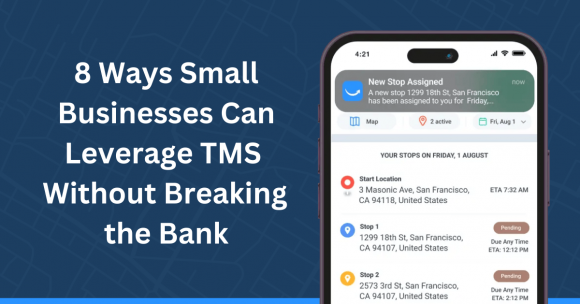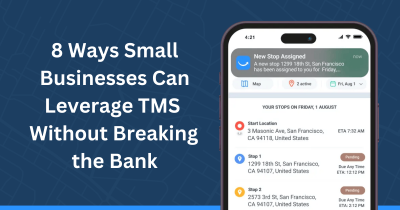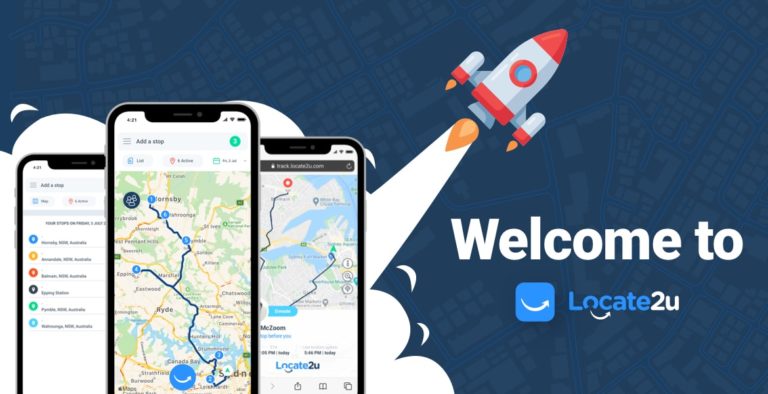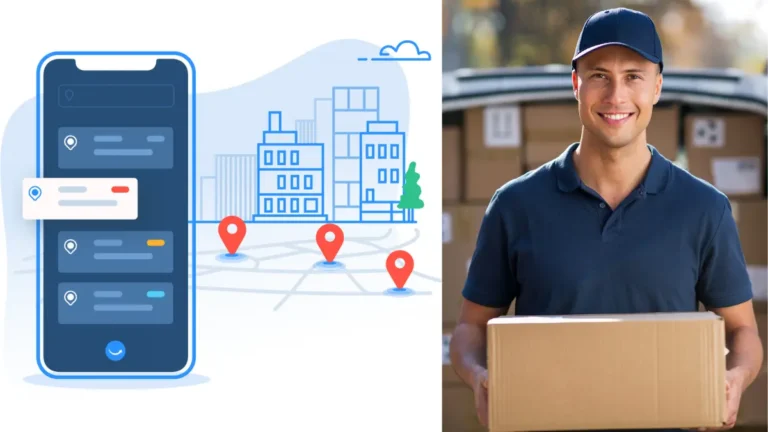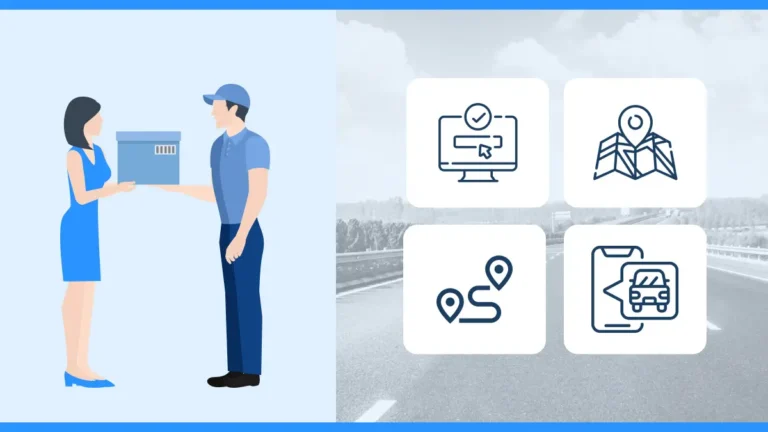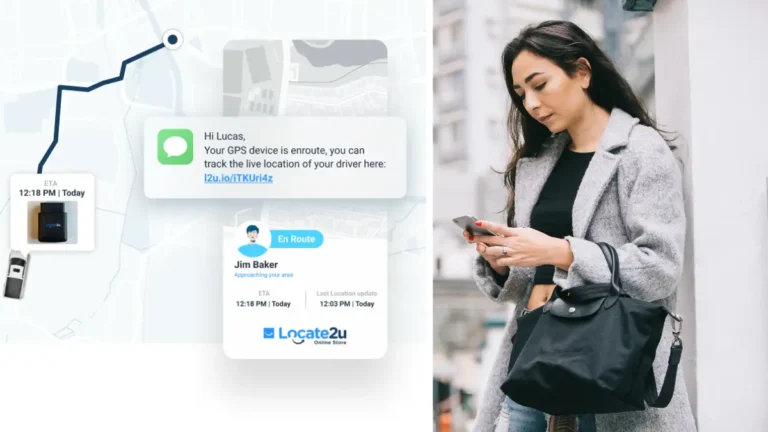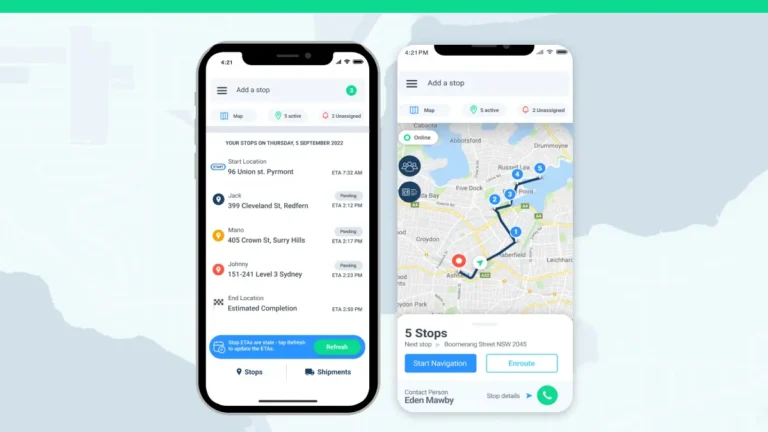For years, transport management systems (TMS) were seen as a tool reserved for large enterprises only. Those with deep pockets and complex supply chains.
But times have changed. Cloud-based technology and scalable solutions now make TMS accessible to small businesses, helping them optimize logistics, reduce costs, and improve delivery efficiency.
And… smaller businesses can now do all of this without draining their budget.
If you’re a small business looking to streamline transportation operations, we will look at eight ways you can leverage TMS without breaking the bank.
But first, let’s establish what exactly a transport management system is before we dive in.
What is a TMS?
In the simplest terms, a transport management system is software that helps businesses plan, execute, and optimize their transportation operations.
It handles everything from route planning and optimization to carrier selection, shipment tracking, and cost management.
For small businesses, a well-implemented transport management system can do more than just save money. It can also automate repetitive tasks and improve delivery accuracy.
Without it, businesses risk inefficiencies, higher expenses, and frustrated customers.
Why small businesses need TMS
Managing deliveries without a centralized system can quickly become overwhelming and extremely unprofitable.
Especially if your business starts to grow and now you’re struggling to juggle everything from processes to payments.
This is where many small businesses make a massive mistake: they rely on manual processes or basic mapping tools. This just wastes time and resources.
8 ways small businesses can (cheaply) leverage TMS
But with the right TMS, small businesses can automate logistics, improve delivery reliability, and scale operations without hiring additional staff.
So, without further ado, let’s look at the eight ways you can make a transport management system work for you.
1. Start with a cloud-based TMS
In the past, traditional TMS solutions required large, upfront investments; specifically for hardware, software, and the IT staff to manage all of this.
But we have cloud-based TMS solutions these days. It eliminates those barriers, giving small businesses a solution that is both cost-effective and scalable.
Also, you only pay for what you use, typically through a monthly subscription model. This means no massive upfront costs and no limitations to how you can scale.
2. Optimize route planning
Two of the biggest factors eating into profits? Delivery delays (and part of this is the dreaded missed delivery), and excessive fuel costs.
But with TMS software, you’d be able to analyze real-time traffic while keeping an eye on all those optimal delivery windows. And all this can be customized for your fleet’s capacity.
So, you’re essentially eliminating unnecessary miles and avoiding traffic congestion and delays. This, in turn, keeps your fuel expenses manageable, and your customers happy because the delivery times are reduced too.
The beauty of a proper TMS system is that small businesses can start with basic route optimization features and expand into advanced routing as their operations grow.
3. Consolidate shipments for cost savings
Sending out multiple small shipments separately drives up transportation costs. TMS software helps businesses consolidate shipments, grouping smaller orders into larger, more efficient loads.
This reduces the number of trips needed and lowers fuel and labor costs. It’s particularly useful for businesses shipping multiple orders to the same region.
A TMS can automatically identify opportunities for consolidation. This ensures every truck or delivery vehicle is used to its full capacity, with no wasted time or resources to mess up your plans.
4. Leverage real-time tracking for better visibility
Customers want accurate delivery updates. They demand it.
A 2024 survey by Fabric found that three-quarters of consumers want free two-day shipping, while two-thirds would go for free next-day shipping.
So it stands to reason a business that provides visibility and transparency of their shipments (for example, by providing real-time tracking links and live ETAs) will keep their customers happy.
Real-time tracking also helps you to proactively address delays. If there’s an issue along the route, such as rush-hour traffic or a flooded road, you can reroute your shipment while still providing accurate ETAs.
This reduces the number of “Where’s my order?” calls that your poor office staff need to deal with.
A GUIDE: How to send customers a live tracking link
5. Automate administrative tasks
Manually handling invoices, shipping labels, and reports can be such a schlep. It eats up valuable time and increases the risk of errors, since we’re all human and mistakes happen.
Since TMS automates these processes, businesses can focus on growth instead of paperwork and inaccuracies.
Reduce manual labor by simply automating tasks like:
- tracking expenses,
- calculating shipping costs,
- generating bills of lading (BOL).
For small businesses with limited staff, automation is what you’re going for here. Automation allows your business to run lean, save time, and reduce administrative overhead.
6. Use data and analytics to improve performance
Beyond just optimizing and automating tedious processes, TMS software also provides powerful insights into your business operations. By tracking key performance indicators, you can measure and improve efficiency in every aspect of your business.
These metrics allow businesses to identify problem areas and optimize logistics strategies. You can, for example, track the following metrics, and much more:
- fuel costs,
- delivery times,
- shipment delays
- carrier performance.
7. Integrate TMS with other business systems
A transport management system works best when it’s connected to the rest of your business operations.
Think about it, you wouldn’t want it to operate separately from your fleet management system, or your invoicing system. That just means tons of manual inputting between systems.
For small businesses, a well-integrated system means less time spent on manual entry and more time spent on better coordination across teams.
In short: work smarter, not harder, for faster order fulfillment and better customer experiences.
ALSO READ: 12 Game-changing fleet management benefits for small businesses
8. Negotiate better shipping rates with carriers
Small businesses often struggle to get competitive shipping rates, but a TMS gives them leverage.
You can use it to analyze your shipping history, related costs, and carrier performance. This puts you in the position to negotiate better deals with your logistics providers.
Better rates mean lower transportation costs. And lower costs mean more competitive pricing for customers, giving your small businesses a very big edge in the market.
Final thoughts on TMS for small businesses
To recap: a transport management system is no longer a tool reserved for large corporations.
With affordable cloud-based solutions, small businesses can now also optimize logistics, cut costs, and improve delivery efficiency, but without the hefty price tag.
By implementing route optimization, real-time tracking, and automation, your small business can stay competitive and scale for growth.
So, should you invest in a transport management system? Only if you want to future-proof your logistics strategy, ensure smoother operations, happier customers, and a stronger bottom line.
About the author
Cheryl has contributed to various international publications, with a fervor for data and technology. She explores the intersection of emerging tech trends with logistics, focusing on how digital innovations are reshaping industries on a global scale. When she's not dissecting the latest developments in AI-driven innovation and digital solutions, Cheryl can be found gaming, kickboxing, or navigating the novel niches of consumer gadgetry.

